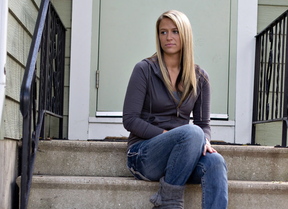Danny Dillon, a three-sport athlete, thought he was snorting a crushed-up pain pill the first time he tried heroin, as a high school junior.
Soon he was injecting the drug, a decision based on not just effects but his wallet.
“The price is what made it easy,” said Dillon, now a recovering addict from Braidwood, a one-time coal town on Chicago’s suburban fringe. “Instead of paying $20 for some pills, I could pay $10 and it would last me two or three days.”
Dillon’s simple calculation captures the recent transformation of heroin use in the U.S.: who buys it, how it’s sold and, increasingly, who dies from it. More people are using it than at any time since the 1970s – 79 percent more in the past five years alone.
Driving this explosion in customers is a growing nonchalance toward a drug once considered taboo. Users today are younger, more affluent and more likely to live in suburbs or small towns, according to government officials and drug treatment experts. And they’re snorting or injecting a form of heroin more potent than during the drug’s previous heyday.
FILLING A POWER VACUUM
In the Midwest, heroin’s re-emergence has been abetted by the marketing ingenuity of the Sinaloa cartel, the Mexican drug organization that has grabbed control of narcotics sales in the region. The cartel, whose leader once described Chicago as his “home port,” took advantage of the power vacuum left when federal prosecutors sent many top gang leaders to prison, fomenting violence among gang members who serve as Sinaloa’s main sales force.
The cartel also exploited rare victories in the war on drugs: reduced cocaine production in South America and tighter U.S. controls on prescription drugs.
Cocaine has increased in price while Oxycontin, sometimes called “hillbilly heroin,” has been reformulated to be less desirable to addicts.
Sinaloa and its dealers offer a ubiquitous alternative in packs of heroin that sell for as little as $10, not much more than a six-pack of beer.
“Economics is driving people towards it, for sure,” said Dan Bigg, director of the Chicago Recovery Alliance, which provides outreach for drug abusers. “It’s a much cheaper way to go for a unit dose.”
This heroin epidemic, hitting not just Chicago’s suburbs but smaller cities, from Indianapolis to tiny Oconto, Wis., is one few people saw coming, least of all the parents of young users.
Isabelle Triezenberg, blonde with braces, looks more like a cheerleader or camp counselor than a recovering heroin addict. She exemplifies a new generation that’s less intimidated by heroin.
In July 2011, her curiosity prevailed and she snorted some.Two weeks later, she injected it.
“It was like taking Vicodin but without the nausea, straight opiates,” said Triezenberg, now 21.
It was also cheaper than pills. Triezenberg needed nine or 10 Vicodin to get high – a $50 a day habit at $5 or $6 a pill. “For the amount I needed, I didn’t have money like that to spend,” she said. Two or three $10 baggies of heroin were enough for a day.
Stories like Triezenberg’s are increasingly common. There were 156,000 new heroin users in 2012, among the highest levels since the 1970s, according to the Substance Abuse and Mental Health Services Administration, part of the Department of Health and Human Services.
WHITE, SUBURBAN AND YOUNG
New heroin users in the Chicago area are more likely to be white, suburban and in their late teens or 20s, said law enforcement officials and drug-treatment counselors.
Once the drug was confined largely to lower-income minorities in the inner city and was so impure that it would offer a high only by injecting it, police and researchers said. The increased purity allows users to snort and smoke it, which is less intimidating than injecting it.
Treatment experts said heroin’s appeal has also been fueled by its popularity with celebrities such as “Glee” star Cory Monteith, who died of an overdose in July. It also has a greater price advantage over drugs such as cocaine. A gram of cocaine cost $165 in September 2010.
A bigger factor in its appeal may be the effort to curb prescription drug abuse that has reduced the desirability and availability of some commonly abused pain pills.
Four of five new heroin users had previously used illicit pain pills, a federal survey found.
Send questions/comments to the editors.



Comments are no longer available on this story